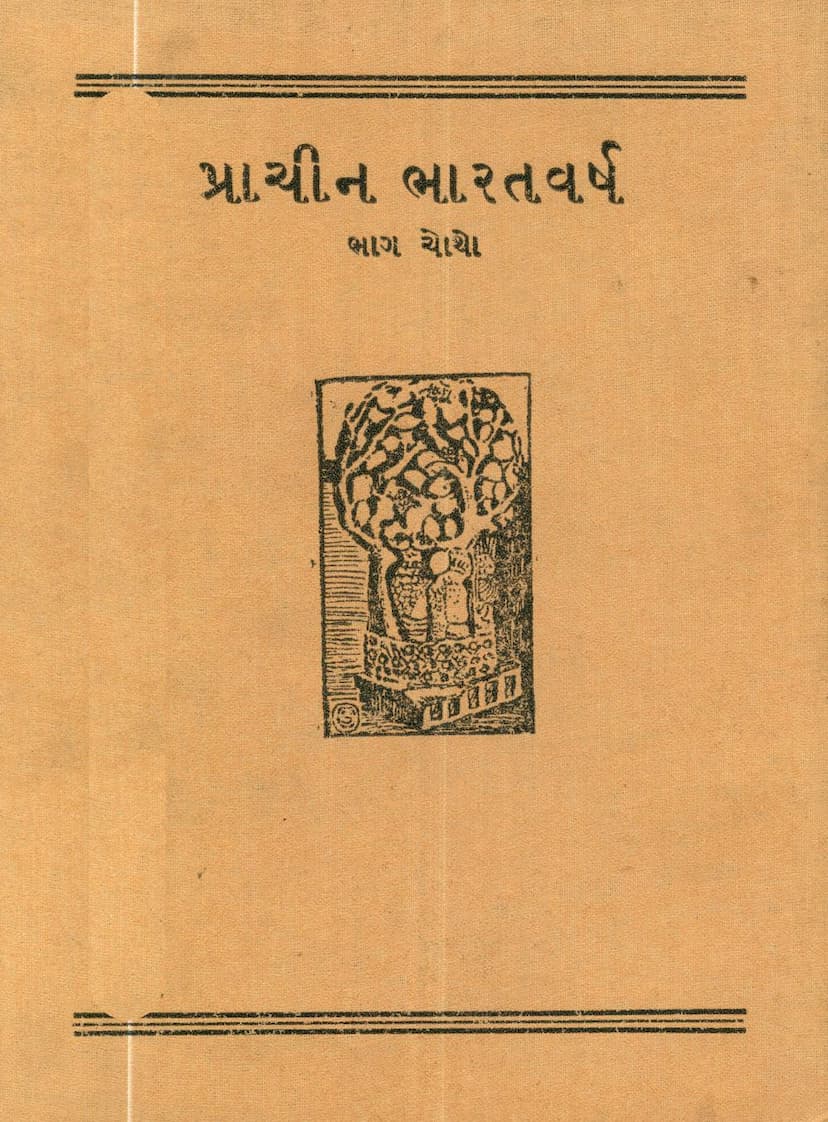Prachin Bharat Varsh Part 04
Added to library: September 2, 2025

Summary
Here's a comprehensive summary of the provided Jain text, "Prachin Bharat Varsh Part 04," authored by Tribhuvandas Laherchand Shah:
Overall Scope and Purpose:
This text, identified as "Prachin Bharat Varsh Part 04," is part of a larger series by Tribhuvandas Laherchand Shah, published by Shashikant and Co. It aims to provide a detailed historical account of ancient India, focusing on the period from 900 BCE to 100 CE. This specific volume, the fourth part of the series, delves into ancient inscriptions, coins, and the accounts of authentic historians to present a novel and factually based historical narrative. The author emphasizes the use of primary sources and rigorous historical analysis.
Key Sections and Themes in the Provided Text:
The text is structured into several introductory and descriptive sections, highlighting the comprehensive nature of the work:
-
Introduction and Publisher's Note: It begins with a brief introduction and a publisher's note, acknowledging the delayed publication due to the author's ongoing work, including an English translation and the preparation of other literary works. The publisher expresses gratitude for reader support and outlines pricing for sets and individual volumes.
-
Author's Intent and Methodology: The author explicitly states the goal of presenting historical facts based on ancient inscriptions, coins, and the writings of credible historians. The text emphasizes a commitment to providing "new facts" from a historical perspective, suggesting a critical re-evaluation of existing historical narratives. The author also acknowledges the potential for scholarly debate and differing opinions, indicating a willingness to engage with critical feedback.
-
Structure and Contents: The book is divided into volumes and sections, with specific chapters detailing various dynasties and historical periods. This fourth volume is noted to contain sections covering:
- Seventh Chapter: The Gardabhilla Dynasty.
- Eighth Chapter: Time-Era Calculation, detailing the origin and historical context of various Indian calendars and eras like the Mahavir Samvat, Kshaharata Samvat, Chedi Samvat, and Vikram Samvat.
- Ninth Chapter: The Kushan Dynasty, their rulers, and their rule in India, along with detailed discussions on the distinctions between Huns and Kushans, and the origins of the Kushan Empire.
- Tenth Chapter: The Chedi Dynasty, its origins, divisions, the reign of Kharavela, the famous Hathigumpha inscription, and the historical significance of the Mahavijaya Prasada and the Jagannath Puri idol.
-
Detailed Examination of Specific Eras and Figures:
- Gardabhilla Dynasty: The text discusses the origin of the name, the number of rulers, and analyzes differing scholarly opinions on their timeline. It highlights King Gandharvasen, his life, his conflict with the Saka people, and the influence of his "Gadbha Vidya." It also touches upon the debate about the time period of Vikrama-Samvat and the possible identity of the founder, suggesting that the prevailing beliefs might be based on legends rather than concrete historical evidence.
- Time-Era Calculation: This section promises a detailed analysis of various Indian samvat (eras), their origins, founders, and establishment times, including the Vikram Samvat, Saka Samvat, Mahavir Samvat, and Chedi Samvat. The author expresses an intent to resolve discrepancies and provide a clear historical timeline.
- Kushan Dynasty: The text acknowledges the Kushan Empire's significant role in Indian history, particularly its influence on northern India. It mentions key rulers like Kanishka I, Huvishka, and Vasudeva, discussing their reigns, political activities, religious leanings (particularly the debate surrounding Kanishka's patronage of Buddhism versus Jainism), and their territorial expansion. The author also addresses the complexities of identifying and dating these rulers, noting the differing opinions among historians and the challenges posed by the limited availability of corroborating evidence.
- Chedi Dynasty and Kharavela: This chapter focuses significantly on King Kharavela, a prominent figure in Jain history, and the famous Hathigumpha inscription. The author aims to clarify the historically debated aspects of Kharavela's reign, his lineage, his interactions with contemporary rulers like Pushyamitra of the Shunga dynasty, and his religious policies, particularly his patronage of Jainism. The text delves into the interpretation of the Hathigumpha inscription, highlighting potential inaccuracies in previous translations and offering a revised understanding. It also explores the geographical context of Chedi and its capital, emphasizing the Jain significance of places like AMARAVATI and identifying the deity associated with certain inscriptions.
-
Critique of Existing Historical Accounts: Throughout the text, the author engages in a critical analysis of existing historical narratives and the opinions of other scholars. He points out discrepancies, potential errors, and the need for re-evaluation based on his research. This is evident in his discussions on the founding of the Vikram Samvat, the dating of the Kushan rulers, and the interpretation of the Hathigumpha inscription.
-
Use of Evidence: The author consistently refers to the use of ancient inscriptions, coins, and classical texts (both Hindu and Jain) as the basis for his arguments. He mentions specific texts and scholars, indicating a thorough research process.
-
Jain Perspective: While the text is a historical account of ancient India, it frequently highlights the Jain perspective, particularly in discussions concerning the influence of Jainism during certain periods and the interpretation of religious symbols and practices associated with Jain figures like Parshvanatha and Mahavira.
In essence, "Prachin Bharat Varsh Part 04" by Tribhuvandas Laherchand Shah is a scholarly endeavor to reconstruct the ancient history of India, with a particular emphasis on the early centuries CE. It showcases a deep dive into primary sources, a critical approach to existing scholarship, and a dedication to presenting a nuanced and historically grounded narrative, particularly concerning the influence and chronology of Jainism and its associated figures within the broader context of Indian history.